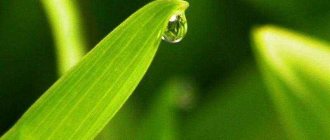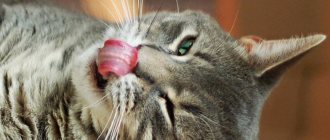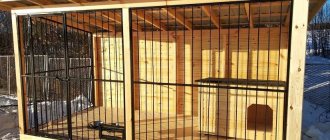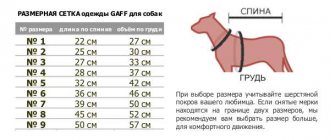The food chain consists of several links and involves relationships between them. A link is a living organism. One is food for the other. The children's song "There Was a Grasshopper Sitting in the Grass" is a vivid explanation of who eats what. The food chains in the surrounding world in the 3rd grade can be traced in the words of this song: the grasshopper ate the grass, and the frog swallowed the “blacksmith”. The strongest link, or predator, is always at the top of the food chain.
Types
Biologists distinguish two main types of food chains: grazing and detrital.
The first (grazing) is the most common; it is based on autotrophs that consume solar energy. It is the producers who are the main components of such chains. Another characteristic feature of grazing is the abundance of first-class consumers who eat green vegetation, as well as several levels of predatory heterotrophs.
Such schemes seem especially complex in the oceans, where for more than half of the fish species there are larger fish that absorb everything that is smaller in size.
A rarer trophic type, detrital, is called decomposition.
This type is usually found in forests. It is distinguished not by direct consumption of autotrophs, but after their slow death and decomposition with the participation of decomposers.
Such a chain begins with organic remains, the second stage is the microorganisms that transform them, the third and fourth level are the so-called detritivores (for example, birds: ducks, geese, sparrows), then the predators that eat the latter (marten, weasel).
Material cycle
Along the chain, consumers also consume the vast majority of nutrients needed to create biomass. Carbon turnover is directly related to energy turnover. Nitrogen must be taken as part of proteins, phosphorus is necessary for many vital biological functions (for the synthesis of DNA and RNA). A balanced intake of these elements can be a challenge for herbivores. For example, wood contains a lot of usable energy in the form of reduced carbon (cellulose), but usually little usable nitrogen or phosphorus.
Although biomass, number of individuals and available energy decrease sharply with each trophy level, toxic substances and numerous pollutants can accumulate with each level. Each animal at a high level must eat a lot of prey from lower levels to satisfy its energy needs. As a result, the predator absorbs all the toxins present in the body from each prey. Because humans are at the end of most food chains, they accumulate large amounts of poisons that previously had no effect on animals at lower trophy levels.
First stage
The initial link in the pasture chain is the producers. These are autotrophic organisms capable of independent synthesis of organic substances. This group consists exclusively of plants that use solar energy.
Photosynthesis is the process of creating glucose molecules with the participation of light quanta captured by the surface of a leaf from carbon dioxide and water. Oxygen molecules are a byproduct of photosynthesis.
Plants obtain nutrients from starch and soil. Further components necessary for the growth and development of the plant are created independently. They are the first link in the food sequence, in other words, they are at the first trophic level.
In addition to photosynthesis, chemosynthesis—the release of energy from chemical bonds—plays an important role. These complex processes help autotrophs transform raw nutrient components and inorganic compounds into energy and organic matter. Plants get their nutrition from soil, rain and sunlight. Based on the method of energy production, autotrophs are divided into photoautotrophs (photosynthesis) and chemoautotrophs (chemosynthesis).
- Photoautotrophs are the founders of the process of photosynthesis, which involves the creation of organic matter from carbon dioxide and water using light energy.
- Chemoautotrophs are the process of releasing the energy of chemical bonds during the creation of organic matter from inorganic compounds.
The bulk of autotrophs are photoautotrophs. These include green plants, cyanobacteria, and algae. Chemotrophs are so few in number that their role in the ecosystem is extremely small.
Autotrophs (producers)
Autotrophs are living organisms that make their own food, that is, their own organic compounds, from simple molecules such as carbon dioxide. There are two main types of autotrophs:
- Photoautotrophs (photosynthetic organisms) such as plants process energy from sunlight to produce organic compounds - sugars - from carbon dioxide during the process of photosynthesis. Other examples of photoautotrophs are algae and cyanobacteria.
- Chemoautotrophs obtain organic substances due to chemical reactions that involve inorganic compounds (hydrogen, hydrogen sulfide, ammonia, etc.). This process is called chemosynthesis.
Autotrophs are the basis of every ecosystem on the planet. They make up the majority of food chains and webs, and the energy obtained through photosynthesis or chemosynthesis supports all other organisms in ecological systems. When it comes to their role in food chains, autotrophs can be called producers or producers.
Levels of the food (trophic) chain
Diagram of the levels of the food (trophic) chain
A food chain is a linear sequence of organisms that transfer nutrients and energy from producers to top predators.
The trophic level of an organism is the position it occupies in the food chain.
First trophic level
The food chain begins with an autotrophic organism or producer that produces its own food from a primary energy source, usually the sun or energy from hydrothermal vents at mid-ocean ridges. For example, photosynthetic plants, chemosynthetic bacteria and archaea.
Second trophic level
Next come the organisms that feed on autotrophs. These organisms are called herbivores or primary consumers and consume green plants. Examples include insects, hares, sheep, caterpillars and even cows.
Third trophic level
The next link in the food chain are animals that eat herbivores - they are called secondary consumers or carnivores (for example, a snake that eats hares or rodents).
Fifth trophic level
Tertiary consumers are eaten by quaternary consumers (for example, a hawk eats owls).
Every food chain ends with an apex predator or superpredator—an animal with no natural enemies (e.g., crocodile, polar bear, shark, etc.). They are the “masters” of their ecosystems.
When any organism dies, it is eventually eaten by detritivores (such as hyenas, vultures, worms, crabs, etc.) and the rest is decomposed by decomposers (mainly bacteria and fungi), and energy exchange continues.
Arrows in a food chain show the flow of energy, from the sun or hydrothermal vents to top predators. As energy flows from body to body, it is lost at each link in the chain. The collection of many food chains is called a food web.
The position of some organisms in the food chain may vary because their diet is different. For example, when a bear eats berries, it acts as a herbivore. When it eats a plant-eating rodent, it becomes a primary predator. When a bear eats salmon, it acts as a superpredator (this is due to the fact that salmon is the primary predator because it feeds on herring, which eats zooplankton, which feeds on phytoplankton, which generate their own energy from sunlight). Think about how people's place in the food chain changes, even often within a single meal.
Best articles: The role of the gonads in the production of female and male sex hormones
Consumers
Consumers are the next link . The role of consumers is played by heterotrophic organisms, that is, those that do not produce organic substances on their own, but use other organisms as food. Consumers can be divided into several levels. For example, the first level includes all herbivores, some types of microorganisms, as well as plankton. Rodents, hares, moose, wild boars, antelopes and even hippos - all belong to the first level.
The second level includes small predators, such as wild cats, minks, ferrets, plankton-eating fish, owls, and snakes. These animals serve as food for third-level consumers - larger predators. These are animals such as fox, lynx, lion, hawk, pike, etc. Such predators are also called apex predators. Top predators do not necessarily eat only those at the previous level. For example, a small fox can become prey for a hawk, and a lynx can hunt both rodents and owls.
Detrital food chain
The main producer of nutrients in this chain is the products of decay and decomposition of dead organic matter, called detritus. They can come from both flora and fauna. Examples of detritus include fallen leaves, remains of dead animals, waste products (excrement) and fallen trees.
Detritus is a feeding medium (and often a habitat) for first-level organisms, detritivores. Mainly invertebrate animals - earthworms, insects, mollusks. Detritivores and the predators that feed on them occupy the main links - the first four trophic segments. The chain ends with decomposers-destructors, which decompose the organic remains of dead detritivores and predators into inorganic compounds. Examples of such decomposers are bacteria and fungi.
Detrital food chains are inextricably linked with pasture ones, since the same organism can participate in both one and the other. Animal nutrition scheme using the example of detritus and pasture chains:
- The detrital chain “dung - earthworm - hedgehog - bird of prey” and the pasture chain “wheat - field mouse - snake - bird of prey”.
- Detrital “animal remains - fly larvae - frog - fox” and pasture “plant pollen - butterfly - frog - fox”.
- Detrital “rotten leaves - worm - mole - marten” and pasture “berries - forest vole - marten - hawk”.
This generally depends on environmental conditions. However, there are ecosystems that are devoid of grazing land and exist solely due to detritus - underground biocenoses
Such ecosystems are deprived of an important link for the pasture food chain - producers with an autotrophic type of nutrition
Their food chains are branched. One producer can have several consumers at once, which, in turn, have 2-3 food sources. And which one to choose right now, they decide for themselves.
The role of the detrital chain in a certain biocenosis is invaluable. It is a full-fledged participant in the cycle of energy, macro- and microelements, along with pasture. An ecosystem cannot function normally without the participation of a decomposition chain. And the relationship between detritus and pasture through consumers and decomposers-saprophages is an organic relationship that allows the creation of many paths and flows for the movement of energy.
Consumption patterns
Animals are divided into groups according to their feeding methods. Examples of such groups:
- herbivores - snail, grasshopper, hare, mouse;
- insectivores - dragonfly, ground beetle, mole, frog;
- predators - owl, fox, wolf, tiger;
- omnivores - badger, bear.
The food pattern in the forest is different from others. Chains of decomposition are common here, because this is how flora and fauna are restored. The vegetation of the forest can be coniferous or deciduous. Insects eat decaying plant remains, rodents feed on insects, and a predator heads the top of the model. Some forest dwellers, such as the wolf or bear, become super predators.
In 3rd grade environmental lessons, an example of a food chain is reinforced with tests. Students are asked to create chains on their own from the options provided. For example:
- spider, rook, fly. Answer: fly - spider - rook;
- hawk, squirrel, mushroom. Answer: mushroom - squirrel - hawk;
- fox, grain, hare. Answer: grain - hare - fox.
Food structures support the health of the community. They provide control over the diversity and number of organisms. This promotes balance in nature. Animal food chains are extremely important, because if one link disappears, the system opens and all participants are threatened with extinction. Small representatives of the group - rodents or frogs - will be able to reproduce uncontrollably, while larger ones will die out due to lack of food. Therefore, it is important to monitor who eats what, forest ecology and endangered species.
Food chain. Examples
Conventionally, several types of ecological pyramids can be distinguished. There is, in particular, a grazing food chain. Examples that can be seen in nature are sequences where the transfer of energy occurs from lower (protozoan) organisms to higher (predator) organisms. Such pyramids, in particular, include the following sequences: “caterpillars-mice-vipers-hedgehogs-foxes”, “rodents-predators”. The other, detrital food chain, examples of which will be given below, is a sequence in which the biomass is not consumed by predators, but a process of decay with the participation of microorganisms takes place. It is believed that this ecological pyramid begins with plants. This is, in particular, what the forest food chain looks like. Examples include the following: “fallen leaves—rotting with the participation of microorganisms,” “dead (carnivorous)—predators—centipedes—bacteria.”
What is a food chain
This is a process that ensures the transfer or exchange of energy and substances, allowing the latter to circulate in the biosphere. In this case, energy losses amount to more than 80% - they are released in the form of heat. The chain has a linear structure (an option is an ecological pyramid) and is made up of several links. They, in turn, may consist of one or several groups of living beings that serve as food for the upper tiers.
The structure of constructing an ecological pyramid, the basis of which is the theory described above, was graphically presented in the 1920s. British zoologist C. Elton: it also demonstrated, depending on the type, the difference in biomass, population and transmitted energy of different levels of the pyramid.
The pyramid rule states: the higher the tier, the lower the biomass and population of organisms belonging to it.
Subjects of the trophic chain are divided into three types depending on the role they play in it: producers, consumers and decomposers. All of them are united in nature by many trophic connections. More complex patterns of food relationships at different levels form unique trophic networks.
Producers
At the bottom level are producers, or autotrophs, organisms that produce the organic substances they eat, synthesizing them from simple molecules. They produce the largest amount of energy compared to other niches, powering the entire chain.
There are two types of autotrophs in the world, depending on the way they synthesize nutritional compounds:
- photoautotrophs, which produce photosynthesis using sunlight, absorbing carbon dioxide and producing sugar (with oxygen being another by-product of food production), examples: green plants, algae, cyanobacteria;
- chemoautotrophs, which resort to chemical reactions to convert inorganic compounds (hydrogen, ammonia, etc.) into organic matter, an example is nitrifying bacteria.
Producers are the basis of all life on Earth. Not a single power line can do without them; their second name is manufacturers.
Consumers
Consumers are already a consumer stage of nutrition. Heterotrophs, as this group is also called, are not able to produce their own food.
Metabolism in their bodies occurs due to the absorption of producers or by-products of their vital activity.
Heterotrophs can come from completely different classes of creatures: mammals, insects, fungi and even plants (there are also predators among them).
Consumers are divided into orders of magnitude, their number reaching up to four in different versions of the pyramid.
Top articles: What is astronomy? Definition of the term, objects of study and connection with other sciences
The order depends on which level the animal eats:
- First-level consumers are content with decomposers - such heterotrophs include a number of insects (ladybug, dragonfly), animals (hare, antelope) or birds (hummingbirds).
- Representatives of the second order absorb those who belong to the previous group. Among them are foxes that hunt hares, insectivorous birds (swallows, starlings), carnivorous spiders and plants (sundew, butterwort, bladderwort).
- The top heterotrophs are birds of prey (hawk, eagle) and mammals (lion, wolf and, of course, humans).
In a marine ecosystem, consumers are the main part of the food chain; they absorb about 70-80% of all available biomass (we are talking mainly about plankton).
Decomposers
These organisms (also called destructors, saprophages), which process dead organic remains of animals and plants, close the cycle of substances, returning minerals and inorganic compounds to producers for synthesis.
They start the process of decomposition of organic matter.
The very name “decomposer” means “returning”, and “destructor” means “destroying”.
These creatures, as a rule, are tiny in size, with the exception of large scavengers (second-order decomposers), and do not leave waste (excrement). These include some bacteria, fungi and insects (dung beetle, earthworm). Saprophages are called “orderlies” of ecosystems, since they help cleanse the environment of rot and toxic substances by eating the remains of decaying organisms.
Examples of correct drafting
Having familiarized yourself with the structure and characteristics of the participants, you can supplement your knowledge with examples of a pasture chain. In this case, it is important to take into account the nature of the ecosystem, determine the corresponding characteristics and living conditions of its inhabitants. Illustrative examples of pasture food chains:
- Field. Flower (clover) - pollinator (butterfly) - lizard - bird (falcon).
- Lugovaya. Grass - hare - fox - wolf. Plant sap - aphid - ladybug - spider - toad - hedgehog - fox.
- Marine. Plankton - cyclops - sprat - guillemot - man.
- River. Phytoplankton - daphnia crustaceans - roach - perch - pike - otter.
- Lesnaya. Tree bark - bark beetles - woodpeckers - owls - hawks.
When drawing up participants' plans, one should take into account their lifestyle, the scale of the area and their eating habits. In this case, a pattern is observed - when moving to a higher trophic level, the weight of individuals increases, and the number in the population decreases. For example, voles are rodents that eat grass. They are smaller in size and more numerous than their enemies - foxes, owls, martens.
There are other chains of relationships. For example, grass - cow - tapeworm - bacteria. It happens that consumers fall out of the chain: berries - powdery mildew - phages. However, any of the chains begins with plants, and is completed by individuals who feed on organic residues.
Food chain meaning
1. Food chain studies help understand feeding relationships and interactions between organisms in any ecosystem.
2. Thanks to them, it is possible to evaluate the mechanism of energy flow and the circulation of substances in the ecosystem, as well as understand the movement of toxic substances in the ecosystem.
3. Studying the food chain provides insight into biomagnification issues.
In any food chain, energy is lost every time one organism is consumed by another. Due to this, there should be many more plants than herbivores. There are more autotrophs than heterotrophs, and therefore most of them are herbivores rather than carnivores. Although there is intense competition between animals, they are all interconnected. When one species goes extinct, it can affect many other species and have unpredictable consequences.
Energy in the food chain
Energy is transferred between trophic levels when one organism feeds on and receives nutrients from another. However, this movement of energy is inefficient, and this inefficiency limits the length of food chains.
This principle of partial energy transfer limits the length of food chains, which typically have 3-6 levels.
At each level, energy is lost in the form of heat, as well as in the form of waste and dead matter that decomposers use.
Why does so much energy leave the food web between one trophic level and the next? Here are some of the main reasons for inefficient energy transfer:
- At each trophic level, a significant portion of energy is dissipated as heat as organisms perform cellular respiration and move around in daily life.
- Some organic molecules that organisms feed on cannot be digested and are excreted as feces.
- Not all individual organisms in a trophic level will be eaten by organisms from the next level. Instead, they die without being eaten.
- Feces and uneaten dead organisms become food for decomposers, who metabolize them and convert them into their energy.
Energy is transferred between trophic levels when one organism feeds on and receives nutrients from another. However, this movement of energy is inefficient, and this inefficiency limits the length of food chains.
This principle of partial energy transfer limits the length of food chains, which typically have 3-6 levels.
At each level, energy is lost in the form of heat, as well as in the form of waste and dead matter that decomposers use.
Destructors (reducers)
Another consumer group should be mentioned, although it does not always appear in food chain diagrams. This group consists of decomposers, organisms that process dead organic matter and waste, turning them into inorganic compounds.
Decomposers are sometimes considered a separate trophic level. As a group, they feed on dead organisms coming from various trophic levels. (For example, they are able to process decaying plant matter, the body of a squirrel malnourished by predators, or the remains of a deceased eagle.) In a sense, the trophic level of decomposers runs parallel to the standard hierarchy of primary, secondary, and tertiary consumers. Fungi and bacteria are key decomposers in many ecosystems.
Decomposers, as part of the food chain, play an important role in maintaining a healthy ecosystem because they return nutrients and moisture to the soil, which are then used by producers.
Circuits and power networks. Ecological pyramid
Unified State Examination Section: 7.2. ... Trophic levels. Chains and power networks, their links. Rules of the ecological pyramid. Drawing up diagrams of the transfer of substances and energy (power circuits)
Power circuits and networks
A food chain is a sequence of organisms in which there is a step-by-step transfer of matter and energy from source to consumer. Each previous link is food for the next.
Types of power circuits:
- Pasture (grazing chain). They start with producers and include consumers of different orders.
- Detrital (decomposition chain). They begin with detritus, include detritivores and decomposers, and end with minerals.
A food (trophic) chain is a series of interconnected species, each of which serves as food for the previous one. In real biogeocenoses, complexes of interconnected trophic chains form food webs.
Food networks are relationships in ecosystems that have developed during the process of evolution, in which many components feed on different objects and themselves serve as food for various members of the ecosystem.
For the existence and development of ecosystems, a constant influx of solar energy is required, the absorption of which is ensured by producers. In most ecosystems, biomass and the energy contained in it decreases at each new level by approximately ten times.
Trophic level is a unit indicating the distance of an organism from producers in the food (trophic) chain. The word trophic comes from the Greek τροφή - food.
All ecosystems are interconnected by the circulation of substances through food webs (and due to atmospheric and geological phenomena). Food connections in ecosystems are characterized using ecological pyramids.
Ecological pyramid
An ecological pyramid is a pattern that reflects the relationship between the nutritional levels of producers and consumers of different orders.
Types of pyramids:
Pyramid of energy. A pattern according to which the flow of energy gradually decreases and depreciates when moving from link to link in the food chain.
Biomass pyramid. The pattern according to which each subsequent food level has a mass 10 times less than the previous one.
Pyramid of numbers. A pattern reflecting the number of individuals at each nutritional level. The main trend is a decrease in the number of individuals from unit to unit.
Rule of the ecological pyramid: at each previous trophic level, the amount of biomass formed per unit of time is 10 times greater than at the next one.
Since biomass decreases exponentially as one moves to higher trophic levels, their total number usually does not exceed three to five.
This is a summary for grades 10-11 on the topic “Chains and power networks. Ecological pyramid". Select next action:
- Return to List of Biology Notes.
- Find notes in the Unified State Exam Codifier in Biology
Biological significance
Mapping food chains helps control the size of each population in many existing ecosystems. Using these linear images, it is convenient for biologists and ecologists to track changes in the species diversity of a particular zone, to calculate the nature and degree of influence of certain factors on species: pollution, urbanization, introduction of new species, climate change, environmental problems.
Trophic pyramids quite clearly show the superiority of one population over another, their relationships, when a sharp increase in one species leads to a reduction in another. Thus, the study of food relationships in nature using trophic chains helps control the state of the environment and protect vulnerable species of animals, fungi and plants, maintaining the natural balance in the biosphere.
Roles of organisms in a community
Squirrel is a herbivore. She collects all kinds of mushrooms and pins them on tree branches to dry. To protect itself from winter lack of food, it stores reserves in the hollow: nuts and acorns.
In the fall, the badger begins to prepare for winter hibernation - it eats itself, stuffing everything it comes across inside. The badger is an omnivore; it eats wild berries and fruits, beetles and slugs. Lizards, frogs and mice also serve as food for him.
The fox is a predator, lives in the forest and eats what it catches. She hunts mice and sometimes partridges. Runs after hares. In winter, it comes close to human settlements and attacks poultry.
The 3 animal food chains described are the simplest.











